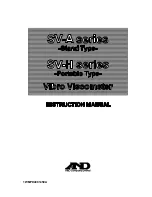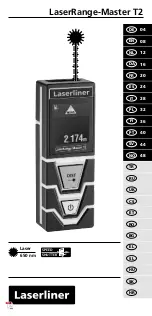
DEPOLOX® Pool Compact
3. Description
19
EN
3.6.2 Function
The following section describes the functional
principle of the flow cell from the sample
water inlet to the sample water outlet.
The sample water supply is connected on the
input side via the G1/2” connection to the ball
valve. The input pressure must be around 0.25
to 3.0 bar. To guarantee a constant flow, the
minimum input pressure must not be less than
0.25 bar. If the pressure is lower, an optional
booster pump must be used. If the admission
pressure exceeds 3.0 bar, an optional pressure
reducing valve must be used.
The sample water flows over the optional
strainer, which prevents dirt particles pene-
trating into the flow cell. In the direction of
flow, the sample water flows via the filter unit
to the check valve housing. The check valve
housing offers a non-return function and
guides the ball for flow rate monitoring.
The multi-sensor monitors the correct flow
following the float principle with reed switch
and records the temperature with a Pt1000
sensor. Large-area sample water earthing is
via the stainless steel sensor housing.
The flow control valve ensures a flow of the
sample water that is not dependent on the
operating pressure. The correct sample water
flow of 33 l/h is preset, checked and documen-
ted at the factory.
The cell body, which can be illuminated, holds
the sensors and due to its design, offers good
cleaning and service options. The sensors are
installed in the mount hole in the cell body
cover with standardized threaded connec-
tions or in special sensor holders. The LED
glow stick is installed in the cell body cover to
visually monitor the sensors and to signal
messages and errors in color.
The flow distributor cap screwed into the cell
body from the bottom allows continuous
hydro-mechanical cleaning of the electrode of
the chlorine sensor using special cleaning sand
and thereby effectively prevents the natural
contamination of the electrode surfaces.
Clean electrode surfaces and a constant flow
of sample water are decisive criteria for high-
quality chlorine measurement and quick
responsiveness.
The sample water supply is connected on the
output side via the G1/2” connection to ball
valve.
At this point, a maximum back pressure of 1.5
bar is permitted.
A sample extraction unit is used to draw sam-
ple water from the cell body through the low-
pressure side of the flow control valve or to
drain the cell body for servicing purposes.
3.7
Sensors
The sensors are screwed into the cover of the
flow cell and connected to the electronics
module.
3.7.1 Chlorine sensor
The chlorine sensor consists of a amperome-
tric 3-electrode systems with potentiostatic
connection. The free chlorine reacts at the
working electrode (cathode) and a current
proportional to the chlorine concentration is
measured. The chlorine sensor consists of the
measurement or working electrode, the coun-
ter electrode and a reference electrode. The
potentiostatic connection maintains the
potential between working electrode and
reference electrode at the level necessary for
the reaction. The current flows via the counter
electrode. This measurement method ensures
a precise and reproducible reading and a sta-
ble zero point. The reference electrode is a sil-
ver/silver chloride electrode (Ag/AgCl) that
remains de-energized. The electrolyte is a
saturated potassium chloride solution. A
membrane permeable for the electrolyte pro-
vides the electrical connection to the measu-
ring solution. Direct contact with the sample
water to be examined can lead to inactivation
of the electrode surfaces as a result of dirt
deposits or electrochemical side reactions.
The flow of sample water in the flow cell ensu-
res continuous cleaning of the electrodes with
a special cleaning sand. Turbulence ensures
constant contact of the cleaning particles with
the surfaces of the electrodes and keeps them
free of contamination. In as-delivered status,
the chlorine sensor is equipped with a wate-
ring cap over the electrodes and the memb-
rane. It contains diluted potassium chlorine
solution which keeps the membrane moiste-
ned, ensuring that the chlorine sensor is ready
for immediate use. When the chlorine sensor
is not in use, for example during the winter,
we recommend fitting the watering cap, filled
with diluted potassium chloride solution.
















































